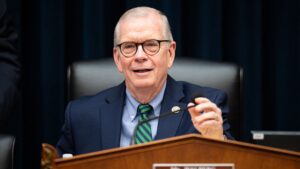Navigating the Future of Student Loans: What You Need to Know
As a member of the Extreme Investor Network community, you know that understanding the shifting landscape of personal finance is crucial. Recent developments in the student loan sector are set to impact millions of Americans, particularly those pursuing higher education. Let’s delve into the recently proposed changes and what they mean for students and their families.
The GOP’s New Vision for Student Loans
Led by House Education and Workforce Committee Chairman Tim Walberg, R-Mich., the Republican party has unveiled a plan dubbed the Student Success and Taxpayer Savings Plan. This initiative seeks to fundamentally reshape the student loan and financial aid system by placing strict limits on borrowing and scaling back repayment options.
The motivation behind this overhaul stems from decades of congressional responses that have largely focused on increasing taxpayer funding without addressing the underlying issues driving college costs. Walberg emphasized the need for reform in a recent statement, saying, "For decades, Congress has responded to the student loan crisis by throwing more and more taxpayer dollars at the problem — never addressing the root causes of skyrocketing college costs."
Proposed Changes and Their Implications
-
Caps on Federal Student Loans
- Starting July 1, 2026, undergraduate students would be capped at borrowing $50,000 in federal loans, while graduate students would have a limit of $100,000. This marks a significant reduction in borrowing potential for many students.
- Higher education expert Mark Kantrowitz warns that these changes may push students toward private loans, which typically lack the borrower protections found in federal programs.
-
Reduced Repayment Plans and Hardship Protections
- One of the most notable shifts in the proposal is the reduction of income-driven repayment (IDR) plans to just one. Currently, over 12 million borrowers are enrolled in various IDR plans, designed to make repayment more manageable.
- Additionally, the plan seeks to eliminate unemployment and economic hardship deferments for new borrowers. This will place added pressure on students who may face unemployment or financial difficulty after graduation.
- Increased Requirements for Pell Grants
- To qualify for full Pell Grant eligibility, students would need to be enrolled for at least 30 hours each academic year, raising the previous requirement of 12 hours per semester. This change could limit access to these vital funds for part-time students.
- Notably, the Pell Grant program has historically supported over six million undergraduate students, and the maximum award for the 2025-26 academic year is set at $7,395. Furthermore, the proposal includes an expansion of Pell Grants to cover short-term workforce training programs—an attempt to adapt to the evolving job market.
The Broader Impact
While the intent behind these changes may be to create a more sustainable student loan system, many consumer advocates express concern that these measures could exacerbate the existing affordability crisis. Sameer Gadkaree, president of The Institute for College Access & Success, aptly summarizes these concerns, stating, "The committee’s current proposal would severely restrict college access by slashing financial aid programs, eliminating basic consumer protections, and making it harder to repay student loan debt."
How to Prepare for These Changes
At Extreme Investor Network, we believe that knowledge is power. Here are a few strategies to navigate this evolving landscape:
-
Stay Informed: Regularly check policies related to student loans and financial aid. Understanding the specifics can make a significant difference in your educational finances.
-
Consider Financial Planning: Consult with financial advisors who specialize in education financing to explore all your options. Tools and resources at your disposal can help you make informed decisions.
-
Explore Alternative Funding: With potential limits on federal loans, consider grants, scholarships, and even crowdfunding as alternative routes to fund your education without incurring debt.
- Budget Wisely: Create a financial plan to manage living expenses while attending school. This will keep you from relying too heavily on loans.
As these changes unfold, the best course is to remain proactive and informed. For more insights on navigating your financial journey, stay connected with the Extreme Investor Network. Your financial well-being is our priority!

